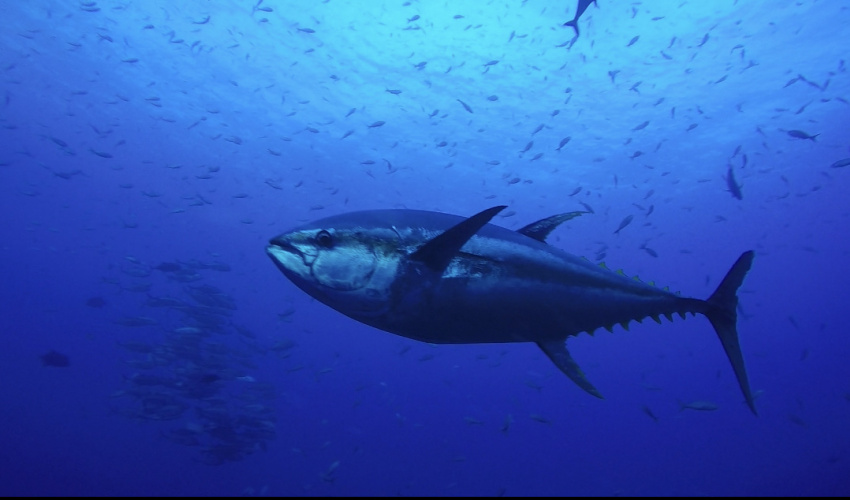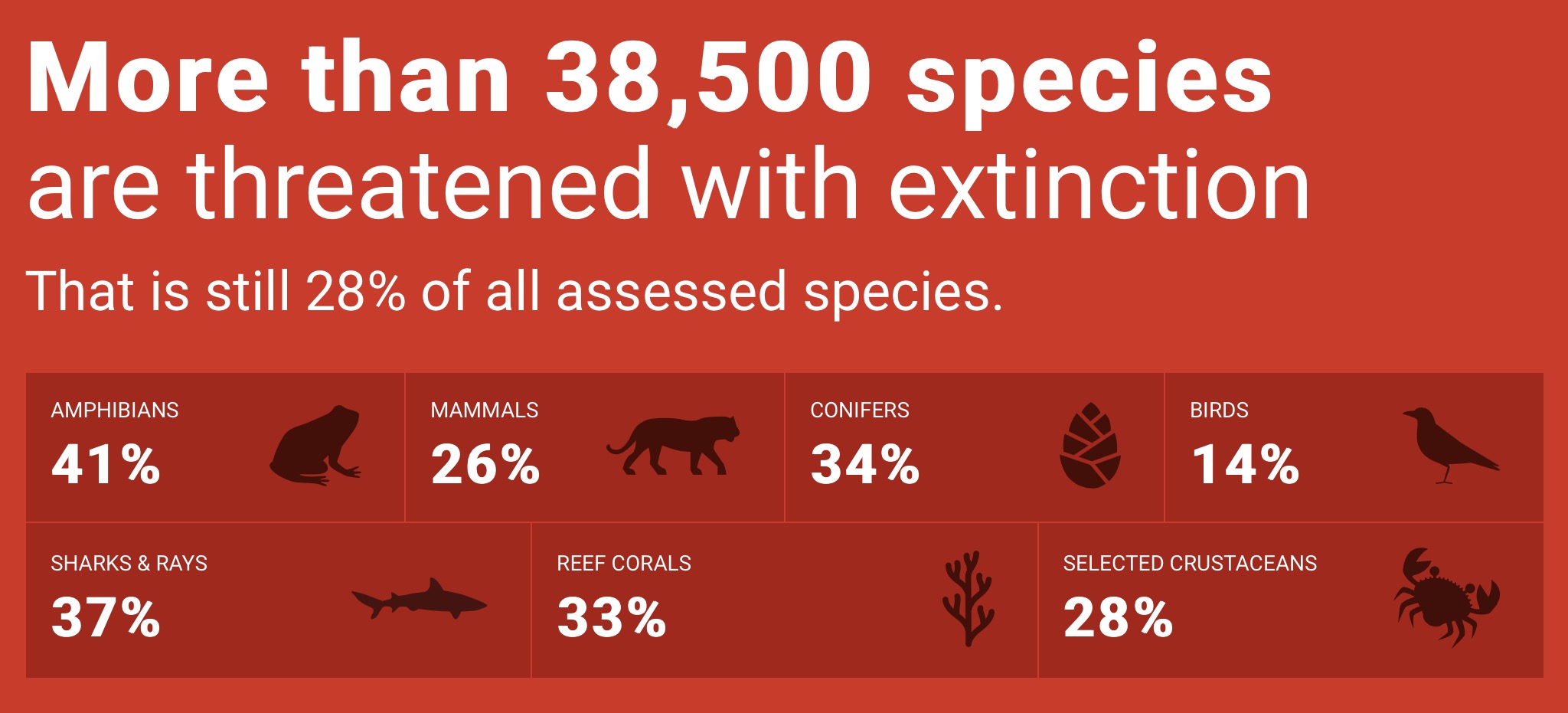
Four commercially-fished tuna species are on the path to recovery thanks to enforced regional fishing quotas, although marine life in general is under mounting pressure from overfishing, habitat degradation and climate change, among other threats.
Tuna species recovering despite growing pressures on marine life say IUCN
On Saturday 4 September 2021, the International Union for the Conservation of Nature (IUCN) issued a news report that four commercially-fished tuna species are on the path to recovery thanks to the enforcement of regional fishing quotas over the last decade, according to the latest update of the IUCN Red List of Threatened Species™ released at the IUCN World Conservation Congress in Marseille. However, the recovery comes in the midst of growing pressures on marine species, with 37% of the world’s sharks and rays now threatened with extinction primarily due to overfishing, compounded by loss and degradation of habitat and climate change. — IUCN.org

Four of the seven most commercially fished tuna species’ numbers recovering
The IUCN Red List now includes 138,374 species of which 38,543 are threatened with extinction.
“Today’s IUCN Red List update is a powerful sign that, despite increasing pressures on our oceans, species can recover if states truly commit to sustainable practices,” said Dr Bruno Oberle, IUCN Director General. “States and others now gathered at the IUCN World Conservation Congress in Marseille must seize the opportunity to boost ambition on biodiversity conservation, and work towards binding targets based on sound scientific data. These Red List assessments demonstrate just how closely our lives and livelihoods are intertwined with biodiversity.”
In the latest Red List update, the seven most commercially fished tuna species were reassessed. Four of them showed signs of recovery thanks to countries enforcing more sustainable fishing quotas and successfully combatting illegal fishing.
- The Atlantic bluefin tuna (Thunnus thynnus) moved from Endangered to Least Concern
- while the Southern bluefin tuna (Thunnus maccoyii) moved from Critically Endangered to Endangered.
- The albacore tuna (Thunnus alalunga) moved from Near Threatened to Least Concern.
- The yellowfin tuna (Thunnus albacares) also moved from Near Threatened to Least Concern.
Source: IUCN.org

Global tuna numbers still a concern while shark and ray in danger of extinction
Despite global improvement at the species level, many regional tuna stocks remain severely depleted. For example, while the larger, eastern population of Atlantic bluefin tuna, which originates in the Mediterranean, has increased by at least 22% over the last four decades, the species’ smaller native western Atlantic population, which spawns in the Gulf of Mexico, has declined by more than half in the same period. The yellowfin tuna meanwhile continues to be overfished in the Indian Ocean.
“These Red List assessments are proof that sustainable fisheries approaches work, with enormous long-term benefits for livelihoods and biodiversity. We need to continue enforcing sustainable fishing quotas and cracking down on illegal fishing,” said Dr Bruce B. Collette, Chair of the IUCN SSC Tuna and Billfish Specialist Group. “Tuna species migrate across thousands of kilometres, so coordinating their management globally is also key.”
The Pacific bluefin tuna (Thunnus orientalis) moved from Vulnerable to Near Threatened in this update due to the availability of newer stock assessment data and models.
This species remains severely depleted at less than 5% of its original biomass. Other tuna species reassessed for this Red List update include the bigeye tuna (Thunnus obesus) which remains Vulnerable, and the skipjack tuna (Katsuwonus pelamis) which remains Least Concern.
The latest IUCN Red List update also includes a comprehensive reassessment of the world’s shark and ray species, which reveals 37% are now threatened with extinction, demonstrating that effective management measures are lacking throughout much of the world’s oceans. All of the threatened shark and ray species are overfished, with 31% further affected by loss and degradation of habitat and 10% affected by climate change.
So despite the promising news regarding the 4 species of tuna, it’s clear there is still a great deal for us to do, and this is no time for inaction. Read the IUCN Red List.
Source: IUCN.org

HELP MAKE THE IUCN RED LIST A MORE COMPLETE BAROMETER OF LIFE
The IUCN Red List of Threatened Species is a critical indicator of the health of the world’s biodiversity – a Barometer of Life – telling us what we need to know to save wild species. So far, over 134,400 species have been assessed for The IUCN Red List. Our goal is to have assessed 160,000 — Our urgent targets are to fund the reassessment of all comprehensively assessed groups. This is essential to continue monitoring the changing status of species across the world. Also, to fund the assessment of taxa not yet represented on The IUCN Red List. This will help expand coverage to a more representative subset of the planet's biodiversity. For more information, see the Barometer of Life page. Help us make the IUCN Red List a more complete Barometer of Life. Donate now.